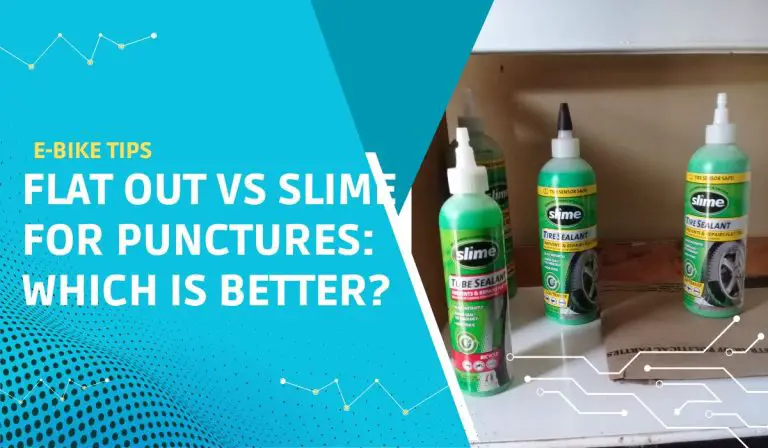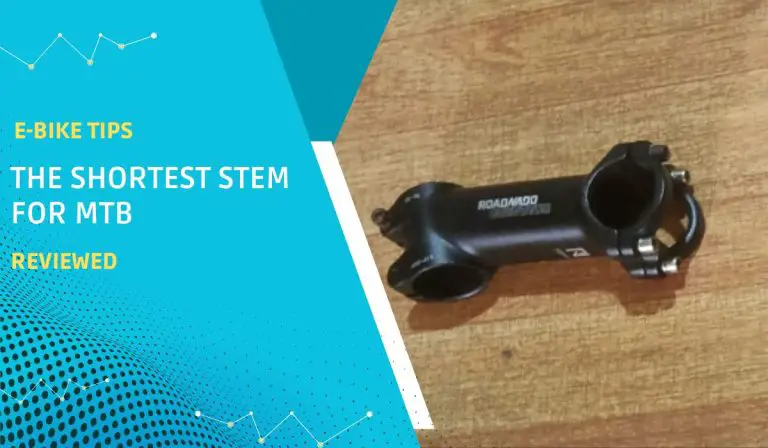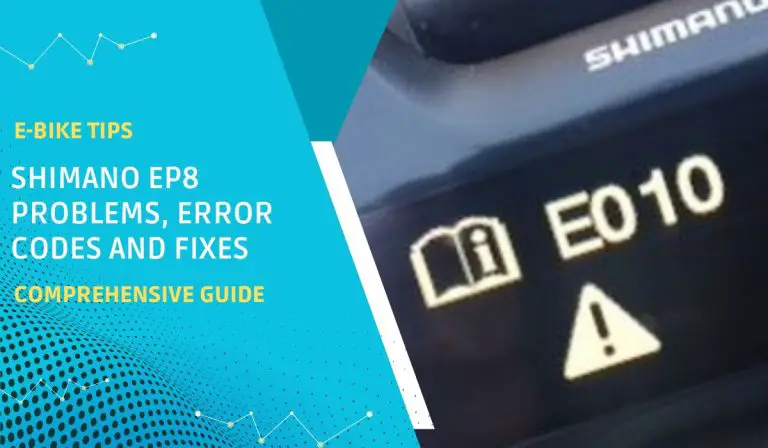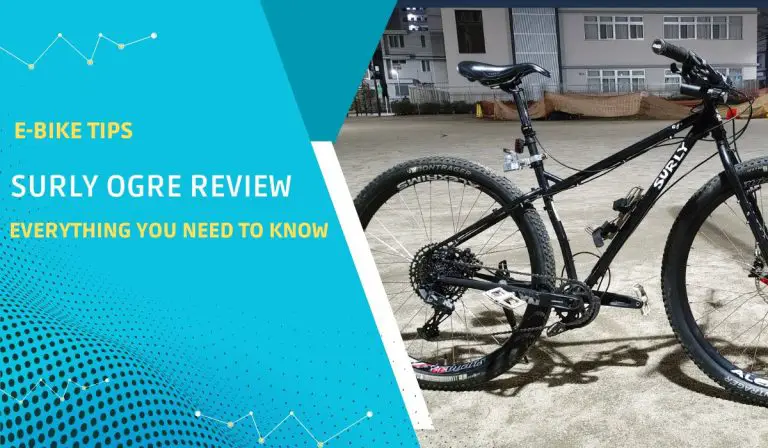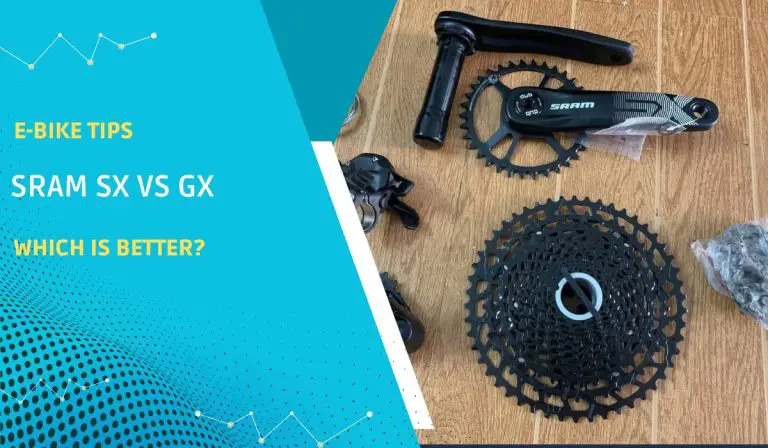After testing both Flat Out and Slime’s puncture performance, it is clear that Flat Out offers excellent puncture resistance and is suitable for off-road adventures. On the other hand, Slime provides enhanced durability and performance for urban rides. Choose Flat Out for rugged terrain and Slime for city commuting.
After I purchased the Rad Runner Plus e-bike for review, I thought of getting tire sealant to use because I planned to feel the bike a little longer before giving it out to one of my neighbors. I added the Flat Out to the tubes along with Tannus armor inserts. So far, no punctures. I’ve also used it on a fleet of rental bikes we use here in Saskatoon, and I’m always fascinated by the number of nails and staples I pull out of the tires, plus the holes are permanently sealed.
As someone with satisfactory experience using Flat Out, it was interesting to see a massive debate online across various e-bike communities on which product is best between Flat Out and Slime.
If you are currently on the verge of buying a tire sealant to prevent punctures and flat tires, it can be overwhelming to make a choice. The sad news is that you can’t know which works until further down the road, after purchase and usage.
But I’m here to help you. To be unbiased in my review, I purchased Slime Preventive Tire Sealant and placed both products side-by-side to see how they performed on different tires.
Skip To Section Here
Flat-Out Sealant Features and Performance
Flat Out is a one-time tire additive. The company markets the sealant as one that gives 24/7 protection against flats for 10 years.
It features a Kevlar water-washable formula that is non-toxic, latex-free, and adhesive-free.
The idea of using Flat Out for e-bike tires is to save time, stay safe, and avoid costly repairs since they work by spotting leaks before they happen.
Specifications
| Model | Multi-Purpose Formula |
| Size available | 32 oz. Bottles (1-pack, 4-pack, or 8-pack) |
| Puncture strength | Up to 1/2-Inch |
| Price | $17 for a pack |
| Weight | 2.25 Pounds |
| Item Form | Liquid |
Application
One major benefit of the Flat-Out tire sealant is its easy installation. You don’t need any apparatus to install the adhesive. The company recommends 8 oz per tire on 26 x 4 tires, which is double the dosage of the Slime.
However, I’ve been using 16oz in my 20 x 4 tiramisu, which is twice as much as necessary, but it’setter in the long run since a tiny bit dribbles out from time to time.
To apply it, you first rotate the tire so that the valve stem is near the top of the tire; then, you remove the valve stem cap and pull the top of the easy dispensing cap to extend the application hose fully.
Then, gently tug and twist to release the valve core tool from the hose. You attach the hose to the valve step and firmly squeeze the correct amount into the tire.
Types of punctures Flat Out can handle
According to Flat Out, the additive, once infused into your tires, will continually seal tread punctures up to 1/2 inch to virtually eliminate slow leaks around the bead or valve stem or due to the natural porosity of the tire.
Pros
- It provides a temporary fix for small punctures, allowing you to continue your journey without the need to change the tire immediately.
- It seals multiple punctures, which can be helpful in case you encounter multiple small leaks on off-road adventures with your e-bike.
Cons
- Like every other tire sealant for punctures, the Flat Out isn’t a permanent fix
- The Flat Out can hold large punctures but may fail when it comes to bigger scratches. It costs more than the Slime alternative.
Slime Sealant Features and Performance
The unique selling point of Slime Preventative Tire Sealant is that it stops flat tires before they even happen.
Unlike the Thru-Core Emergency Model, Slime Preventive Tire Sealant allows you to put it into your tires ahead of time, and it helps protect them from getting punctures.
So when your tires get punctured, the sealant will quickly fill the hole and keep your tire inflated, just like the Flat Out. However, it uses Fibro-Seal technology, comes with valve core removal, and requires air.
According to Slime, the liquid sealant can be left in the tire for up to 2 years after application.
Specifications
| Model | Prevent and Repair Tire Sealant |
| Size available | 32 oz. Bottles |
| Puncturstrengthgh | Up to 1/4″ (6mm) punctures |
| Price | $17 on the website (cheaper in retail stores) |
| Item Form | Liquid |
Application
The required dosage for a bike tire of Slime is 4 oz. To apply it, you take the cap from the slime bottle and use the teeth to pull the inner part of the stem out, which opens it up for usage. With that out of the way, you use the cap to put the additive back in the branches and fill it up.
It is still effective at a low freezing point of -35 F (-37 C) and a high separation point of 182 F (82 C).
Types of punctures it can handle
Slime’s Prevent & Repair Tire Sealant seeks out and instantly seals tread area punctures in tubeless tires up to 14, as the company claims.
Pros
- Seals and inflates your tire in a flash.
- Affordable option
- Great reputation
Cons
- Like Fkat Out, you’ll need to get your tire checked by a professional soon.
Comparing durability and longevity
While using both products, I have more confidence in Flat Out because the company says it lasts for ten years, and Slime says it stays liquid for two years. While I’ve not had enough time to test how true this is, the reviews are convincing. But I’m definitely returning to update this aspect in a few more years.
Also, I noticed that Flat Out cleaned up quickly with water, while Slime was hard to clean up after a leak. The green, slimy mess around the place was a hassle for me, and I believe many other bikers can testify to this.
All the while, I use Flat Out in my Rad Runner; I hit cactuses and sharp rocks all over in Easter, and I’m always amazed at how many holes were plugged whenever I got to change my tires.
The decision on which is best for you depends on what you want. Both products are great, and if you’re budget-conscious, the Slime will appeal more. However, if you’re focused on which can plug a hole better and be easier to clean up, Flat Out has more accolades.
However, this is not to say that Slime isn’t as tenacious, sticky, or reactive. Perhaps the effectiveness is why it only lasts two and a half years? But wouldn’t you prefer one that serves similar quality for an extra eight years?
Flat Out has been incredible; in the last three weeks, I’ve had three nails, a big one puncturing my ti, and am still holding air. It won’t work forever, I know, but so far, I’ve been impressed.
Which Should You Buy?
Dealing with tire punctures is a common challenge for any rider, and finding the perfect sealant can make all the difference in ensuring a smooth and uninterrupted journey.
You’ll need to consider your priorities in terms of longevity, frequent riding conditions, ease of application, and budget when deciding between Flat Out and Slime sealants.
In this video that got everyone talking, Bolton-Bikes (Area 13) tested the FlatOut and Slime, along with other alternatives such as Mr. Tuffy and Tannus. They discovered that Tannus works well up to a specific depth, but FlatOut continued to protect, even against long objects.
The problem with the test in the video is that the wheels were not on a spindle or a bike where they should be spinning at around 10 mph because there’s the factor of even distribution that also determines how long this liquid sealant can hold up in the tube.
In the article above, we’ve explored the strengths and limitations, considered tire compatibility, and weighed the pros and cons to discover the ideal puncture sealant that perfectly aligns with your biking needs.
I hope you find it helpful.

